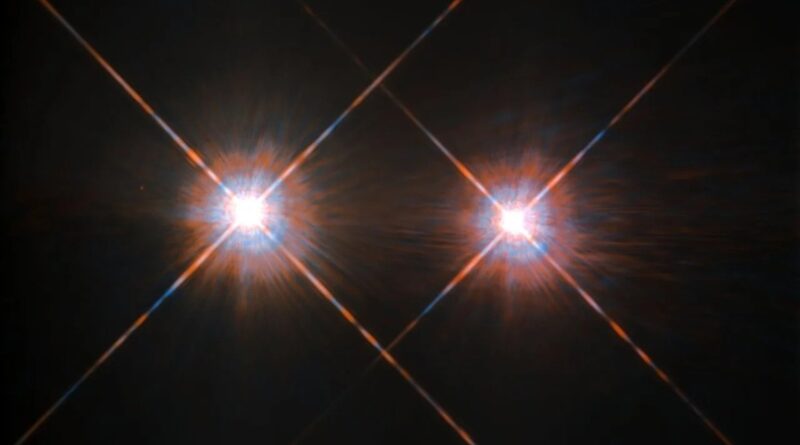Chunks of Alpha Centauri—Our Closest Stellar Neighbor—Might Have Already Reached Us
Our nearest stellar neighbor, Alpha Centauri, is moving towards us at a slow and steady pace. In about 3,000 years, the triple star system will be at its closest point to Earth, but new research proposes that material from Alpha Centauri has already made its way to our solar system. And more is on the way.
Alpha Centauri is currently 4.37 light-years from Earth, a relatively close distance from a cosmological perspective. Our nosy neighbor happens to be a triple star system made up of two Sun-like stars, Alpha Centauri A and Alpha Centauri B, and a red dwarf known as Proxima Centauri. As it travels through the cosmos, the busy star system ejects material into interstellar space. A study, which was accepted for publication in the Planetary Science Journal, estimates that around one million objects from Alpha Centauri have steadily crept into our solar system over the past 10 million years.
In 2017, a long, cigar-shaped object cruised through our solar system unannounced. Oumuamua, as it came to be known, was the first known interstellar object to visit our solar system. Its origin, however, remained largely mysterious. Where did this oddly-shaped space rock come from?
To better understand interstellar objects, the researchers behind the new study used Alpha Centauri as a case study, examining whether material from the nearby star system could make its way to orbit around the Sun. Things are always in motion in space. Gravitational tugs, magnetic fields, and interstellar drag pull objects toward our solar system, and only objects larger than 10 microns can survive the journey, according to the study.
Using computer models that simulated the delivery of material from Alpha Centauri in the relatively recent past, the researchers found that approximately one million objects larger than 328 feet (100 meters) may be lurking in the Oort Cloud, a giant spherical bubble surrounding the Sun that’s the most distant region of our solar system.
Considering how far they are, these objects could be extremely difficult to detect. There’s a far-fetched, one-in-a-million chance that one of those objects is within 10 astronomical units (AU) of the Sun. A single AU is the average distance of Earth to the Sun, so at 10 AU, we’re talking about a distance near Saturn’s orbit. “Any material currently leaving that system at low speed would be heading more-or-less towards the solar system,” the paper reads.
To be clear, the study proposes an idea based on computer simulations; astronomers have yet to detect any interstellar material from Alpha Centauri. That said, if such material exists, identifying it would be a crucial first step, as studying bits and pieces of this nearby star system could provide valuable insight into Alpha Centauri.
Proxima Centauri has two exoplanets in its orbit, an Earth-sized planet situated inside the habitable zone (that sweet spot where liquid water can persist at the surface) and a super-Earth located farther out. Alpha Centauri A is suspected to host a Neptune-sized exoplanet, but scientists have yet to confirm its detection. More planets are likely to orbit the triple star system, and those planets may be habitable. Therefore, understanding the interstellar material that may have come from Alpha Centauri could provide new insights into how planets form and the search for life on exoplanets.

